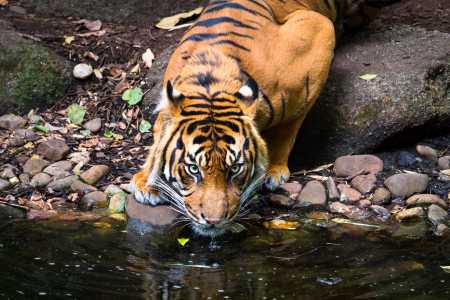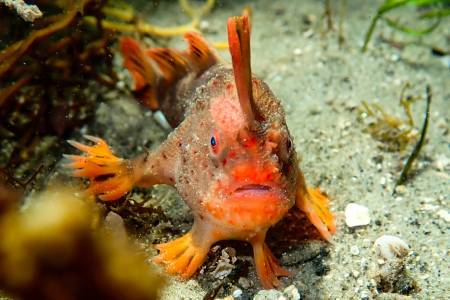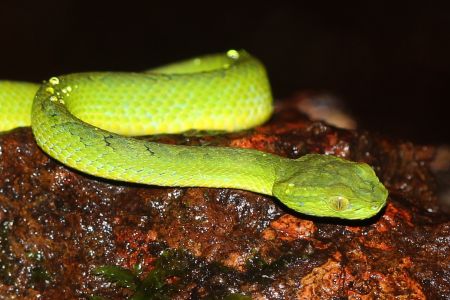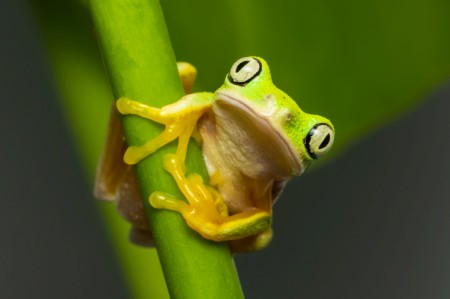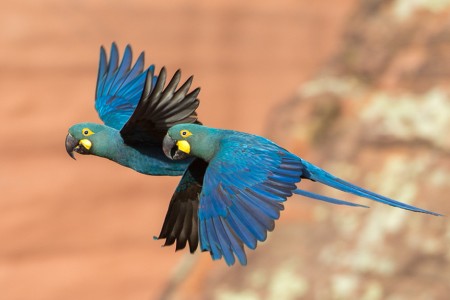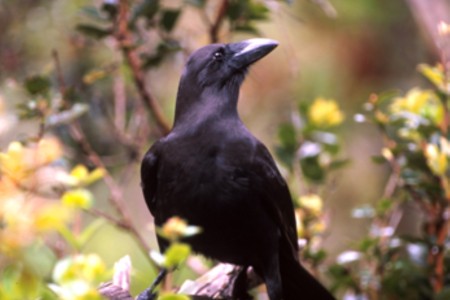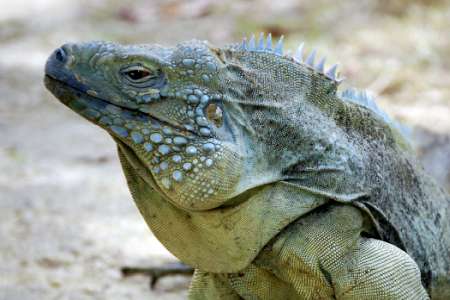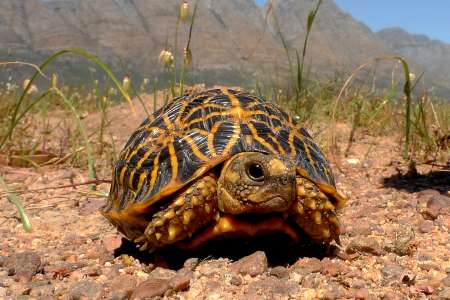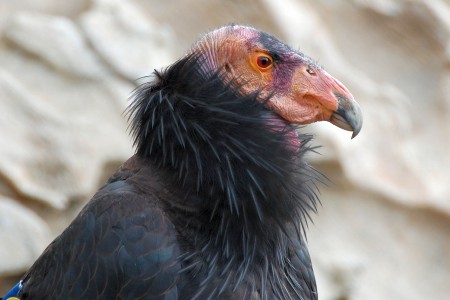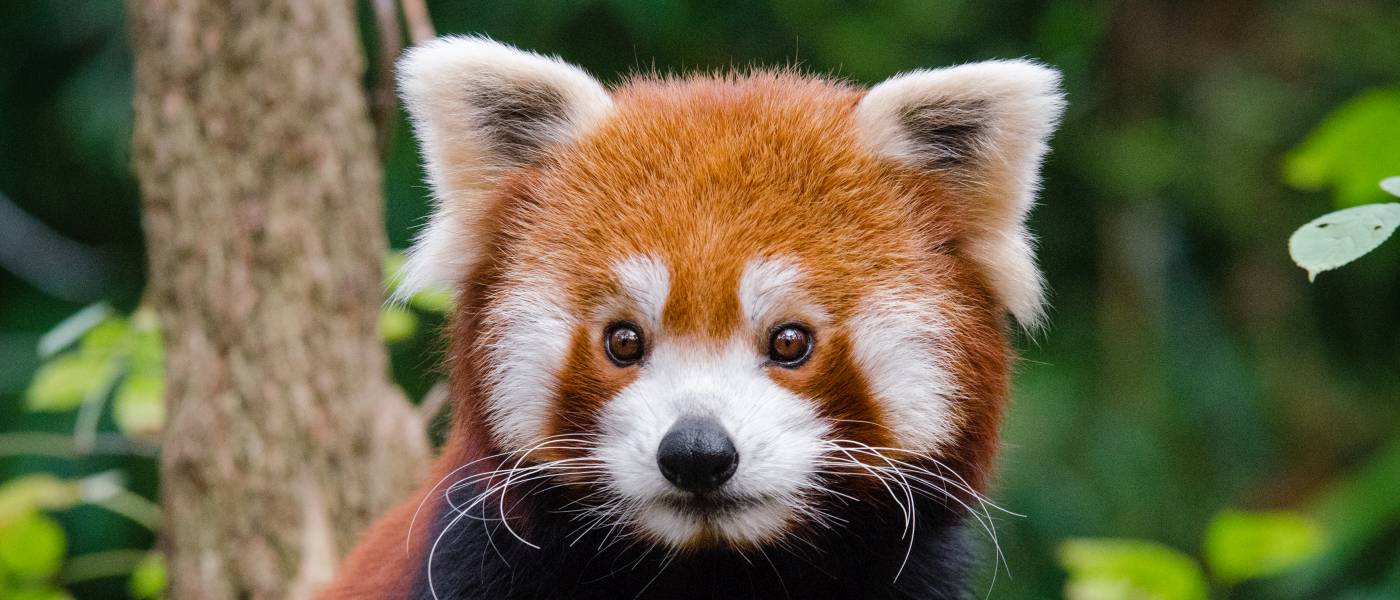

Red Panda
An Amazing Species on the Brink of Extinction

INTRODUCTION
Red pandas (Ailurus fulgens), sometimes called the lesser pandas, the red bear-cats, or the red cat-bears, are small arboreal mammals native to the eastern Himalayas and southwestern China. Their official scientific designation, Ailurus fulgens, was given to them in 1825, recognizing their unique status by the scientific community. Despite its name, it is not closely related to the giant panda. The red panda has its unique family, Ailuridae, which is part of the superfamily Musteloidea, also including the weasel, raccoon, and skunk families.
Scientific Classification
• Kingdom: Animalia
• Phylum: Chordata
• Class: Mammalia
• Order: Carnivora
• Family: Ailuridae
• Genus: Ailurus
• Species: A. fulgens
Appearance and Behavior
Red pandas are small with body lengths are about 20 – 26 inches and weigh 6 – 13 pounds. They have rust-colored thick fur coats, and long, bushy tails with six alternating transverse ochre rings, which they use for balance and to cover themselves in winter. They possess striking facial markings and features that resemble a raccoon’s, with white and red markings.
Red pandas are solitary animals, mainly active from dusk to dawn (crepuscular and nocturnal). They are very territorial and use scent markings to communicate their presence.
According to the DNA evidence, researchers state that the red pandas are two distinct species:
- The Chinese red pandas (Ailurus fulgens styani) or (Ailurus fulgens refulgens) are found in China and Myanmar (Burma). Their facial coats are redder and the tail rings are a darker red than those of Himalayan red pandas.
- The Himalayan red pandas (Ailurus fulgens) are found in Bhutan; Nepal and India. Their face coats and tail rings are whiter than other species.
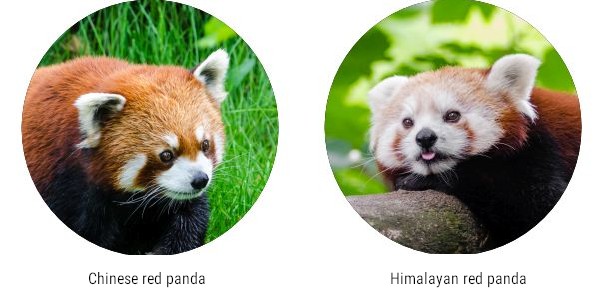
Left: Chase Clausen/Depositphotos. Right: Mathias Appel/Flickr.
Habitat and Ecology
Red pandas live in the temperate forests and shrublands of the Himalayas, ranging from Nepal; Bhutan; India; Myanmar (Burma); and China. They are arboreal, spending most of their time in trees, and are well-adapted to a cold environment. They live up to 23 years and are mostly herbivorous, primarily eating bamboo, but they also consume eggs, birds, insects, and small mammals when available.
They have a slow reproductive rate, and breed once a year, giving birth to one to two young each year after a gestation period of about 134 days.
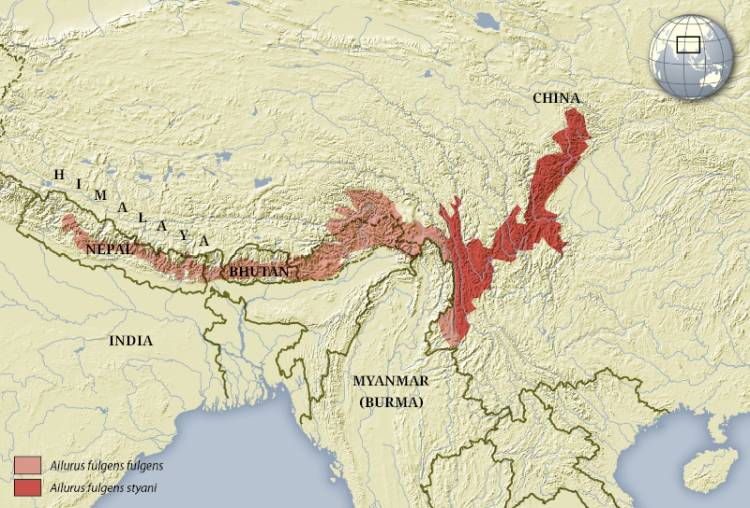
Red panda range: Nepal; Bhutan; India; Myanmar (Burma); and China. Locations added. Karte: NordNordWest, CC BY-SA 3.0 DE, via Wikimedia Commons.
Conservation Status
This beautiful animal is sadly facing extinction as its population has sharply declined due to poaching, habitat loss, inbreeding depression, disease, and climate change. In 2015, red pandas were classified as Endangered by the International Union for Conservation of Nature’s Red List of Threatened Species (IUCN). Urgent conservation actions are needed to protect the remaining populations and address threats before it is too late. With dedicated efforts, we can preserve these magnificent creatures in their natural habitat, rather than only knowing them from photos and descriptions. Their survival reminds us of our duty to protect nature.
THREATS TO RED PANDAS

Dire declines in the wild populations have endangered red pandas to a point where they are at risk of extinction in the wild. According to the IUCN, “Populations have plausibly declined by 50% over the last three generations (estimated at 18 years) and this decline is projected to continue, and probably intensify, in the next three generations.”
Found in several countries, their habitats are often in hard-to-access locations, making data collection on them difficult. This leads to credible sources differing on the numbers remaining in the wild, with some stating that only 2,500 remain in the wild, while others maintain that the number is 10,000. However, estimates of the numbers remaining have been low enough to capture the attention of the IUCN, which, in 1994, changed its status from “Insufficiently Known” to “Vulnerable” and then to “Endangered.”
Habitat Loss and the Red Pandas’ Fight for Survival
The threats to the red panda’s survival in the wild are the loss and degradation of their habitats. Red pandas’ destruction is primarily deforestation, as forests are cleared for timber, agriculture (livestock), and development. Conservation strategies like wildlife corridors to connect fragmented habitats could enable red panda movement and breeding between populations. Boosting overall population numbers is critical to creating a genetically robust species that can withstand future threats.
Government-imposed protections to habitats have helped where enforced, but even with these in place, projections are that 70% of Nepal’s red panda’s habitat is not protected. Even where there are large protected areas, enforcement is often weak, and human influences continue to result in declining populations.
Small Population Genetics
With estimated wild populations under 10,000, red pandas suffer from a lack of genetic diversity and face risks of inbreeding depression. This hampers efforts to keep populations healthy over the long term. Habitat fragmentation exacerbates the problem by isolating groups. Small isolated groups also experience high levels of inbreeding, resulting in birth defects and infertility. Maintaining connectivity between populations could help preserve genetic diversity and a healthy population.
Climate Change
Climate change is causing changes in temperature and precipitation patterns. As temperatures rise, the tree line shifts higher up the mountain, reducing the number of suitable habitats for red pandas, and bamboo forests disappear. Losing their homes and food sources makes it difficult to survive.
Changes in rainfall patterns can also lead to droughts or floods, further reducing the availability of suitable habitats, disrupting the distribution of the bamboo that red pandas rely on for their diet, and significantly impacting the red pandas’ habitats. These events destroy or damage large bamboo forest areas, leading to food shortages and increasing the risk of red panda predation. Higher temperatures and drier seasonal conditions also result in increased numbers of forest fires, which also take their toll.
Poaching and Trapping
In many habitats that are the homes of red pandas, there is active poaching and trade for their distinctive pelts, fur, and other parts in red pandas, as they are greatly valued. An instance of this type of red panda trade is detailed in the South China Morning Post, which describes a police raid where hundreds of kilos of body parts of pandas and other wildlife were discovered. Inadvertent deaths and suffering also occur when traps are set for other animals, such as deer and wild pigs, ascendingly capture and kill red pandas.
Disease
Where red pandas and humans share the same habitat, dogs safeguarding livestock against potential predators can transmit up to seven types of gastrointestinal parasites to red pandas and spread the highly contagious and deadly canine distemper virus into red panda populations, a significant threat. These dogs also attack and kill many pandas, even when they are not a threat to livestock.

Increasingly strict laws in India, Bhutan, Tibet, China, Myanmar (Burma), and Nepal are on the books as attempts to reign in the threats and save the remaining wild red pandas. Though the laws and regulations exist, inadequate public awareness and weak law enforcement practices often have left less than desirable results.
IMPORTANCE OF RED PANDAS

Biodiversity
The red panda is a unique mammal, the sole remaining member of the Ailuridae family. The other two, the Bataller’s and Bristol’s pandas, went extinct millions of years ago. Genetically, the red panda is considered a living fossil, as its lineage probably diverged from other carnivores, like skunks, raccoons, and weasels, 5 million years ago. As a rare and evolutionarily distinct creature, the red panda represents an irreplaceable component of global biodiversity. Its extinction would mean the loss of not just a species but an entire branch of the evolutionary tree.
Ecotourism
The red panda’s appealing looks and behavior make it an important species for ecotourism in the temperate forests where it resides. Red panda viewing attracts visitors to the mountains of Sichuan, China, and Nepal’s Langtang National Park, and ecotourists are willing to pay more for chance sightings of this rare and endearing animal. Revenue from red panda ecotourism provides funds for forest conservation and employment for local community members as guides and park rangers. These economic incentives encourage locals to protect the red panda rather than act as threats to its existence. Ecotourism also builds public appreciation for the species, increasing donations and political support for protection efforts.
Role in the Ecosystem
As specialists that feed almost exclusively on bamboo, red pandas play an important role in propagating and maintaining healthy bamboo forests. The loss of red pandas could disrupt bamboo forest ecosystems that many other species depend on. Red pandas have specialized adaptations for obtaining nutrition from bamboo, like an extra “thumb” that helps them grip bamboo stalks and strong jaws for crushing the tough plant. Their feeding increases bamboo propagation by spreading seeds in their droppings.
By promoting bamboo growth, red pandas shape the forests, creating light gaps and new sprouts that increase the diversity and health of the habitat. Many other endangered species, like giant pandas, golden takins, and silver pheasants, rely on the same bamboo forests that red pandas help cultivate. The disappearance of red pandas will lead to declining bamboo availability and negatively impact the broader forest ecosystem.
Cultural Significance
The red panda is considered a national treasure and symbolizes wildlife protection in countries like Nepal and China by representing conservation. Efforts to save the red panda strengthen national environmental movements in these countries. Allowing the red panda to potentially go extinct would damage not just biodiversity but also cultural history, identity, and ethos in the lands the species has long inhabited. From an ecological and artistic standpoint, it is imperative to preserve this treasured animal.
Research Value
There is still much to learn about red pandas’ behavior, ecology, and biology that could provide useful insights for conserving other threatened forest species. Protecting them allows continued research opportunities.
HOW TO HELP RED PANDAS
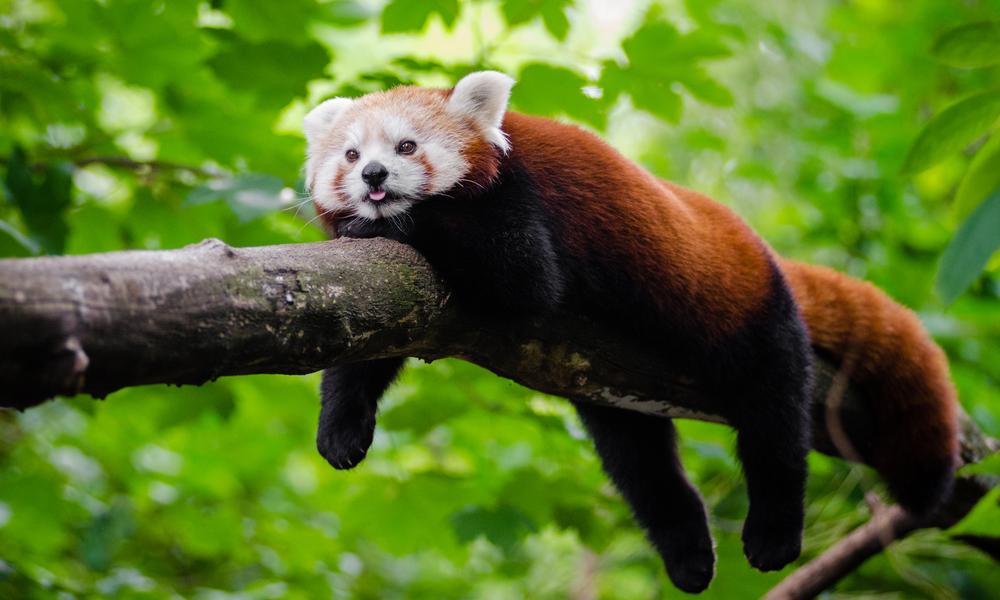
Be Aware of the Panda’s Challenges and Yours
Educate yourself and others about red pandas, their threats, and their importance to the ecosystem. International Red Panda Day is celebrated every year on the third Saturday in September and can easily be found on Google.
Promote and support educating local populations on the value of protecting the red pandas and other species in their biosphere and the link between a healthy ecosystem and their economies.
Support Sustainable Tourism
Many communities that live near red panda habitats rely on tourism for their livelihoods. You can support these communities by choosing sustainable tourism options with minimal environmental impact and respecting local people’s rights.
Avoid Products Made from Red Panda Fur
Red pandas are hunted for their fur, which is used to make hats, gloves, and other items. Their coats are highly valued for their dense, soft fur. Although red pandas are a protected species in most of their habitat range, they are still poached and illegally traded. The fur from just one animal is used to make a single hat. With only around 10,000 red pandas left in the wild, this unsustainable practice puts immense pressure on the remaining populations.
We can help protect red pandas by avoiding purchasing products made from their fur and encouraging others to do the same. Look out for items labeled as made from ‘red panda’ and opt for ethical alternatives instead. Your purchasing decisions make meaningful differences.
Support Conservation Groups
Rainforest Trust or The Red Panda Network develops and encourages the support and participation of local communities in conservation efforts that support the red pandas and other species. They currently have programs that help protect over one million acres of habitat, over 50% of Nepal’s red panda range.
These nonprofit organizations work endlessly to save the red pandas. Donations go a long way to helping them help the pandas. Many of them have super programs that allow you to adopt a red panda. Please share this information on social media and encourage your friends and family to learn more about these adorable, unique creatures.
Reduce Your Carbon Footprint
Climate change is one of the biggest threats to red pandas, as it can affect their habitat and food sources. Rising temperatures are causing glaciers and snowpacks to melt faster, leading to decreased water sources during dry seasons, directly impacting the bamboo forests and ecosystems that red pandas rely on. Increasingly erratic weather patterns bring extreme downpours and destroy red panda habitats.
You can help mitigate climate change by reducing your carbon footprint; many ways exist. Using energy-efficient appliances, switching to renewable energy sources, reducing air travel when possible, and moving towards an eco-friendly diet, such as one that reduces your consumption of meat and dairy products, all will help. Livestock farming is a major contributor to greenhouse gas emissions. Composting food scraps, shopping locally and seasonally, and reducing single-use plastics are other sustainable actions we can take daily.
Learn about Interconnected Biodiversity
Understand that all species are interdependent, making global biodiversity critical to the survival of all species. Human activities negatively affect the red panda’s survival, and when red panda populations decline, this ripples through other species around the world, affecting all of us and costing you money. Beyond understanding the incredible interconnects of biodiversity, it’s essential to recognize the role of governance in protecting species.
Be Responsible With Your Vote
It is very important to elect leaders who share your concerns about the red panda and other environmental issues, such as global climate change. Effective national and worldwide leadership managing these issues is critical for the survival of the red panda and all species, including us and the planet we know.

